LEARN MORE ABOUT BRAZIL
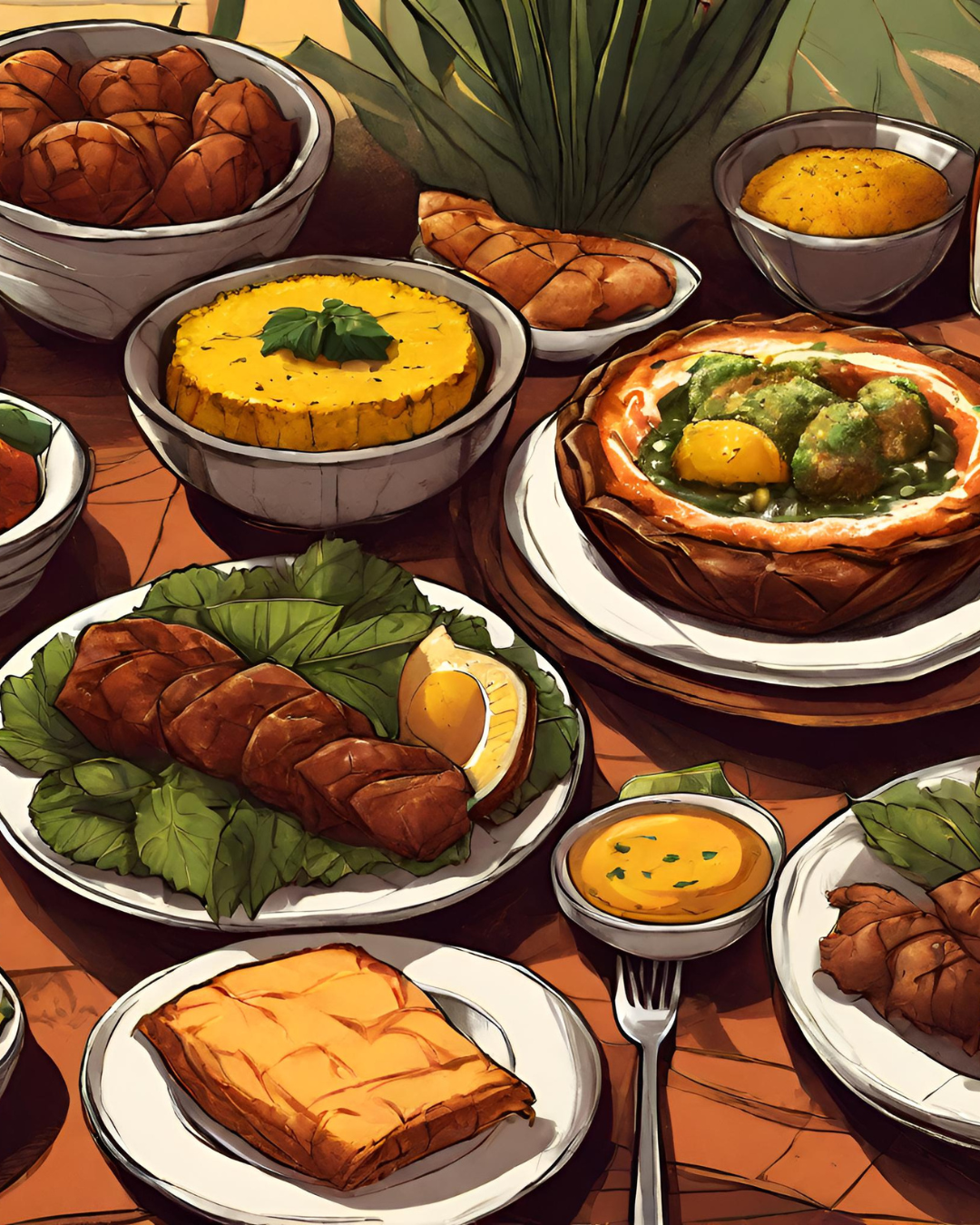
FOOD/COMIDA
Brazilian cuisine makes abundant use of fresh ingredients, including tropical fruits like pineapple, mango, passion fruit, and guava, as well as staples like rice, beans, cassava (manioc), and corn.
- Regional Varieties: Different regions of Brazil have their own culinary traditions and specialties. For example, in the Northeast, you’ll find dishes like moqueca (a fish stew), acarajé (fried bean cakes), and tapioca pancakes. In the South, barbecue (churrasco) is popular, along with dishes like feijoada (a bean and pork stew). In the Amazon region, exotic fruits, fish, and indigenous ingredients are commonly used.
- Feijoada: Often considered Brazil’s national dish, feijoada is a hearty stew made with black beans and a variety of pork cuts, such as bacon, sausage, and ribs. It’s typically served with rice, collard greens, orange slices, and farofa (toasted cassava flour).
- Churrasco: Brazilian barbecue, known as churrasco, is a beloved tradition. It typically involves grilling various cuts of meat, such as beef, pork, chicken, and sausage, over an open flame. Churrascarias (barbecue restaurants) are popular throughout the country.
- Street Food: Brazil has a vibrant street food scene, with vendors selling snacks and treats on street corners and at markets. Some popular street foods include coxinha (fried chicken croquettes), pastel (deep-fried pastries filled with cheese, meat, or shrimp), and pão de queijo (cheese bread).
- Desserts: Brazilian desserts are often sweet and indulgent. Brigadeiro, a chocolate truffle made with condensed milk and cocoa powder, is a favorite at birthday parties and celebrations. Other popular desserts include pudim (caramel flan), quindim (coconut custard), and bolo de cenoura (carrot cake).
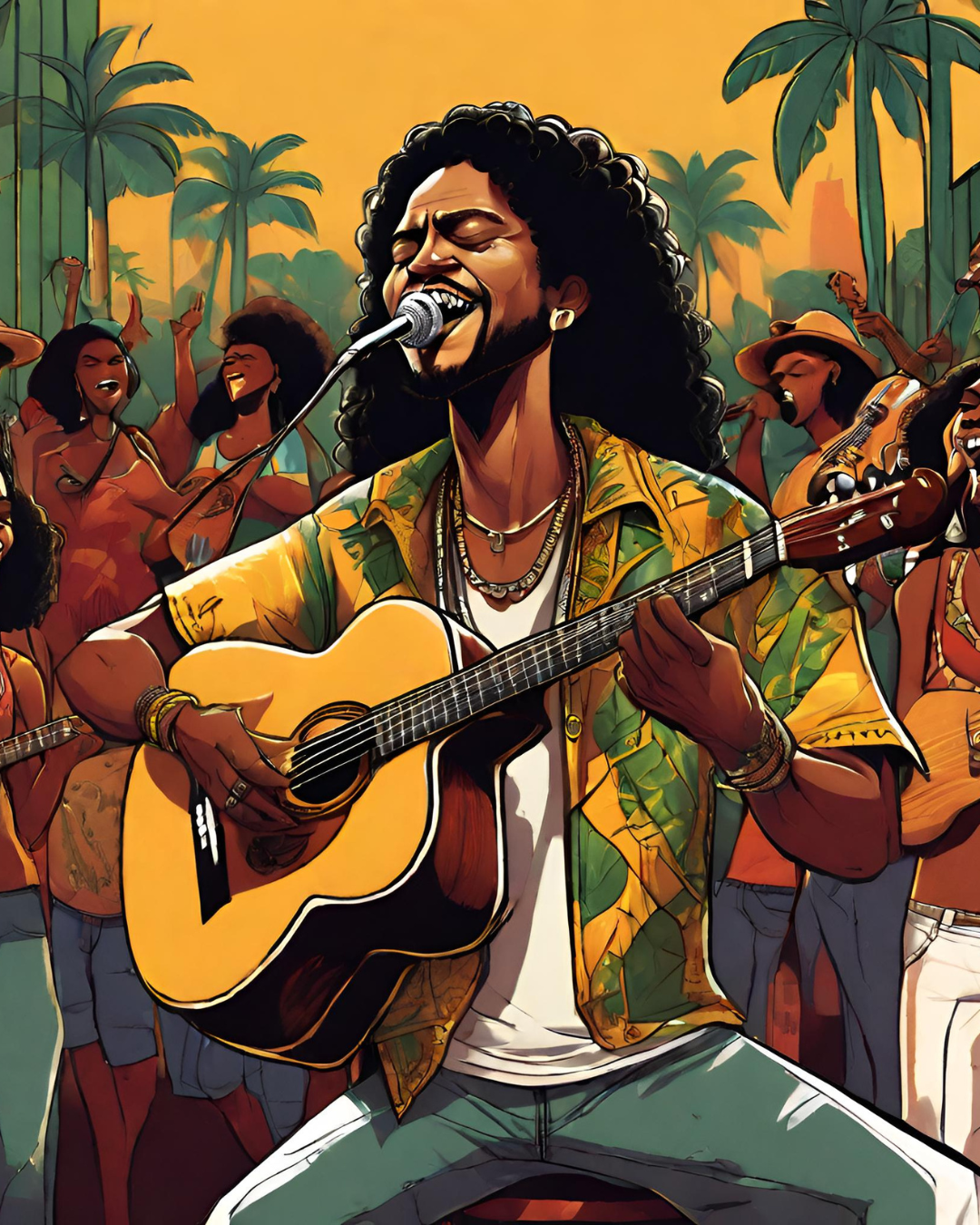
MUSIC/MÚSICA
Music is deeply ingrained in Brazilian culture and plays a significant role in the daily lives of its people. Here’s more about music in Brazil:
- Samba: Samba is perhaps the most iconic genre of Brazilian music, known for its lively rhythms and energetic dance style. Originating in Rio de Janeiro in the late 19th century, samba has evolved into various subgenres, including samba-enredo (samba performed during Carnival parades), samba de roda (circle samba), and pagode (a more contemporary style).
- Bossa Nova: Bossa nova emerged in the late 1950s and gained international prominence in the 1960s. It is characterized by its gentle melodies, syncopated rhythms, and understated vocals. Artists like João Gilberto, Antônio Carlos Jobim, and Astrud Gilberto are among the most famous proponents of bossa nova.
- MPB (Música Popular Brasileira): MPB encompasses a wide range of musical styles, blending elements of samba, bossa nova, rock, folk, and other genres. It emerged in the 1960s and 1970s as a platform for socially conscious lyrics and innovative musical experimentation. Iconic MPB artists include Caetano Veloso, Gilberto Gil, Elis Regina, and Chico Buarque.
- Forró: Originating in the Northeast region of Brazil, forró is a genre characterized by its accordion-driven melodies, syncopated rhythms, and dance-friendly beats. Forró music often celebrates rural life and cultural traditions, and it is a central part of festivals and parties throughout the Northeast.
- Funk Carioca: Funk carioca, also known simply as funk, originated in the favelas (shantytowns) of Rio de Janeiro in the 1980s. It is characterized by its heavy beats, repetitive lyrics, and provocative dance moves. Funk carioca has gained widespread popularity in Brazil and beyond, with artists like MC Kevinho, Anitta, and MC Guimê achieving international success.
- Axé: Axé music originated in the state of Bahia in the 1980s and is known for its infectious rhythms, vibrant percussion, and carnival atmosphere. Axé songs often feature call-and-response vocals and draw inspiration from Afro-Brazilian religious traditions. Artists like Ivete Sangalo, Daniela Mercury, and Claudia Leitte are popular axé performers.
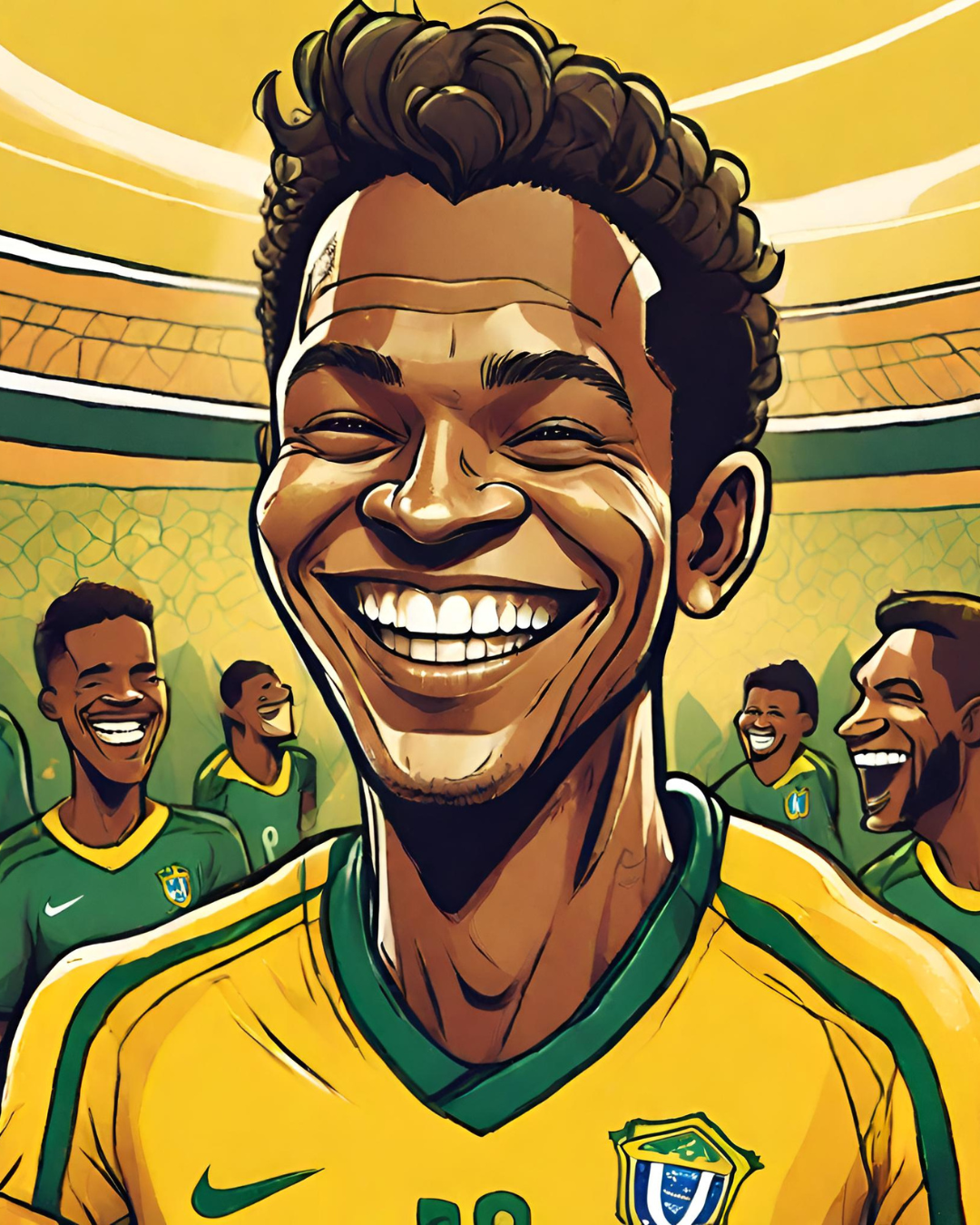
FUTEBOL/FOOTBALL
Football (soccer) holds a special place in Brazilian culture and is often referred to as the “beautiful game.” Here’s more about football in Brazil:
- Passion and Obsession: Football is more than just a sport in Brazil—it’s a way of life. Brazilians are incredibly passionate about football, and the sport is deeply ingrained in the national identity. From the beaches of Rio de Janeiro to the streets of São Paulo, you’ll find people of all ages playing football and discussing the latest matches.
- Success and Tradition: Brazil has a rich footballing history and is the most successful nation in the history of the FIFA World Cup. The Brazilian national team has won the World Cup a record five times (1958, 1962, 1970, 1994, and 2002) and is known for its style of play, which emphasizes flair, creativity, and attacking football.
- Legendary Players: Brazil has produced some of the greatest footballers of all time, including Pelé, widely regarded as one of the greatest players in history. Other legendary Brazilian players include Ronaldo, Romário, Zico, Ronaldinho, and Kaká. These players have left an indelible mark on the sport and inspired generations of footballers around the world.
- Copa do Brasil: Football is played at all levels in Brazil, from informal street games to professional leagues. The Campeonato Brasileiro Série A is the top tier of Brazilian football, featuring some of the country’s biggest clubs, such as Flamengo, Corinthians, São Paulo FC, and Palmeiras. The Copa do Brasil is the premier knockout cup competition in Brazilian football, featuring teams from all divisions of Brazilian football.
- Cultural Phenomenon: Football in Brazil extends beyond the pitch and permeates all aspects of society. Match days are social events where friends and family gather to watch games together, often enjoying barbecue (churrasco) and cold beer. Football is also a source of national pride and unity, bringing people together across social, economic, and cultural divides.
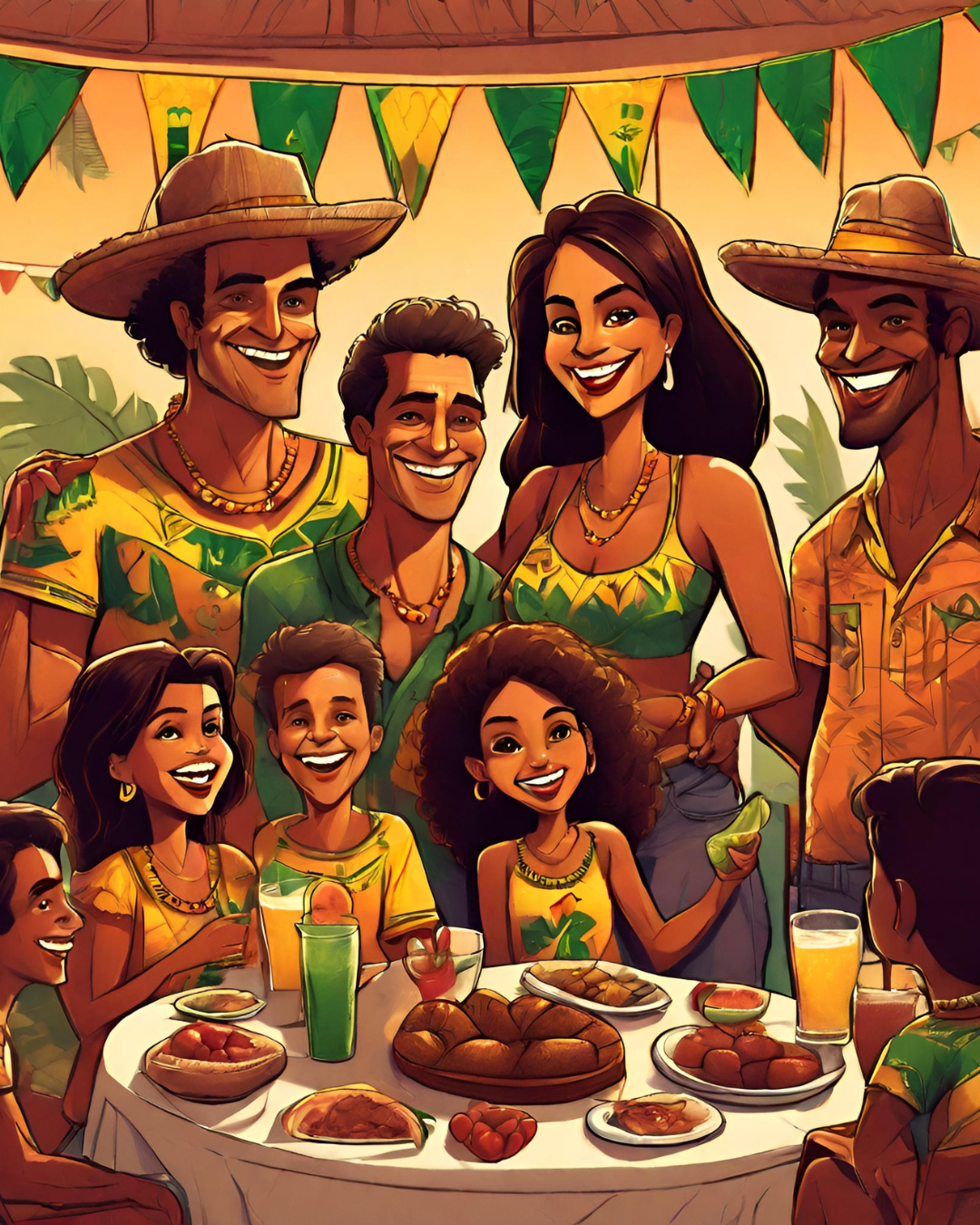
FESTIVALS/FESTIVAIS
Brazil is known for its vibrant and diverse festivals and celebrations, which reflect the country’s rich cultural heritage and spirit of joy and camaraderie. Here’s more about festivals and celebrations in Brazil:
Carnaval: Carnaval is perhaps the most famous festival in Brazil and is celebrated with great enthusiasm throughout the country. It typically takes place in February or March, just before Lent, and features colorful parades, elaborate costumes, samba music, and street parties that last for days. Rio de Janeiro and Salvador are particularly famous for their Carnaval celebrations, which attract millions of visitors from around the world.
- Festas Juninas: Festas Juninas, or June festivals, are traditional celebrations held throughout Brazil to honor Catholic saints, particularly Saint John the Baptist. These festivals feature music, dance, bonfires, and traditional foods like corn-based dishes, sweets, and mulled wine. Festas Juninas are especially popular in the Northeast region of Brazil, where they are celebrated with great fervor.
- Music Festivals: Brazil hosts a variety of music festivals throughout the year, showcasing different genres and styles of music. One of the largest music festivals in the country is Rock in Rio, which features international and Brazilian rock, pop, and electronic artists. Other notable music festivals include the Festival de Verão de Salvador, the Lollapalooza Brazil, and the Virada Cultural in São Paulo.
- Folk Festivals: Brazil’s diverse cultural heritage is celebrated through numerous folk festivals and cultural events. These festivals often feature traditional music, dance, crafts, and cuisine from different regions of the country. Examples include the Bumba Meu Boi festival in Maranhão, the Festa do Peão de Boiadeiro (Bull Riders’ Festival) in Barretos, and the Parintins Folklore Festival in Amazonas.
- New Year’s Eve: New Year’s Eve, or Réveillon, is celebrated with great fanfare in Brazil, particularly along the coast. Many Brazilians celebrate by wearing white clothing, lighting fireworks, and making offerings for good luck and blessings in the new year. Copacabana Beach in Rio de Janeiro is a popular destination for New Year’s Eve celebrations, attracting millions of revelers each year.
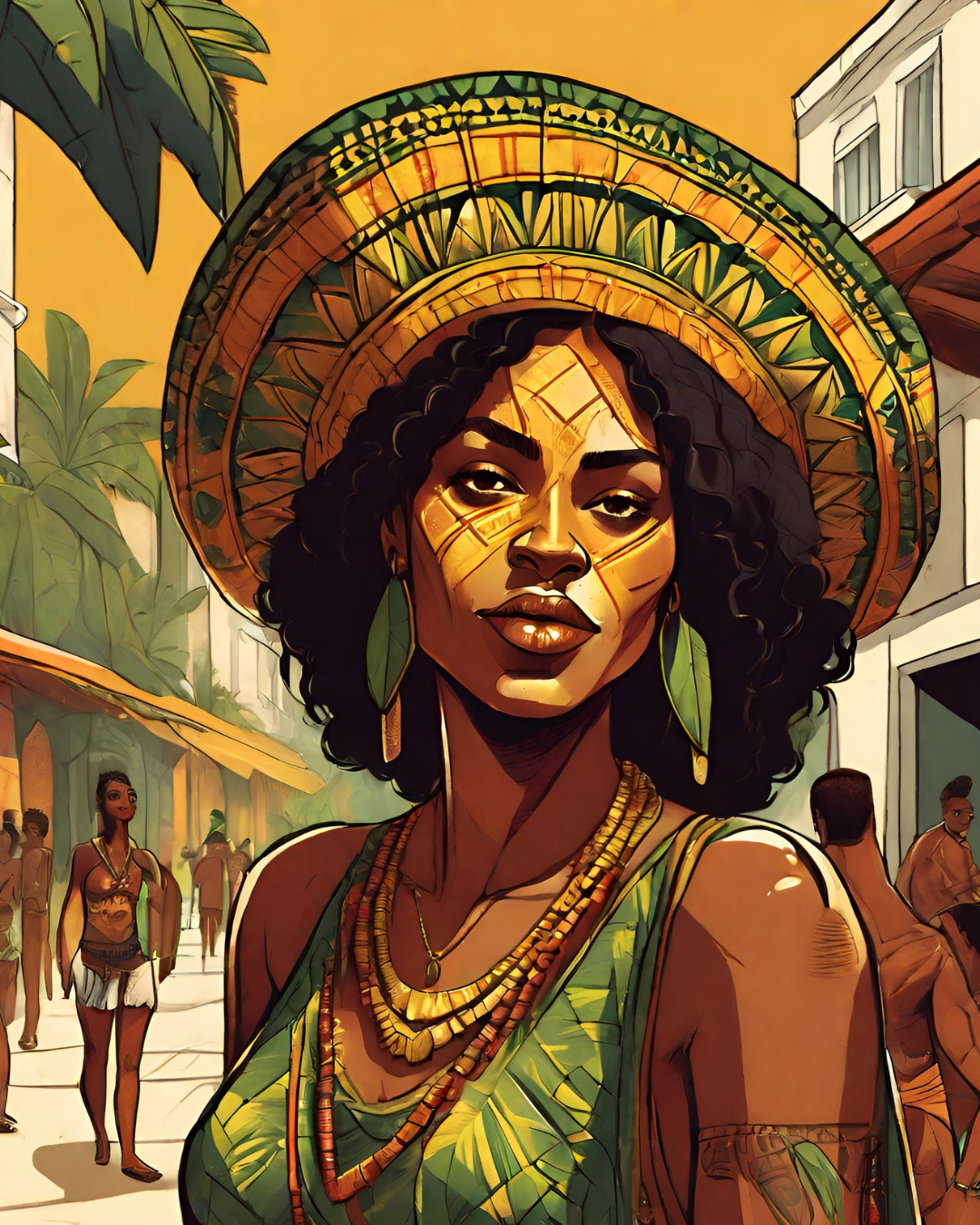
ART AND CULTURE/ ARTE E CULTURA
Brazil has a rich artistic and cultural heritage that encompasses a wide range of expressions in painting, sculpture, literature, theater, music, and more. Here’s more about art and culture in Brazil:
Visual Arts: Brazilian visual arts encompass a variety of styles and movements, from colonial baroque to modern and contemporary art. Artists like Candido Portinari, Tarsila do Amaral, and Anita Malfatti are celebrated for their contributions to Brazilian art. The São Paulo Art Biennial is one of the most important contemporary art events in Brazil and attracts artists and visitors from around the world.
- Literature: Brazilian literature has produced many renowned authors and works that have gained international recognition. Writers like Machado de Assis, Jorge Amado, Clarice Lispector, and Paulo Coelho have made significant contributions to literature with their novels, short stories, and poetry. The works of these authors often explore themes of identity, society, and cultural diversity.
- Music: Music is a central aspect of Brazilian culture, with genres like samba, bossa nova, MPB (Música Popular Brasileira), forró, and funk carioca gaining widespread popularity both in Brazil and abroad. Brazilian musicians like Antônio Carlos Jobim, João Gilberto, Gilberto Gil, Caetano Veloso, and Marisa Monte have left a lasting impact on global music.
- Theater: Brazil has a vibrant theater scene, with a long tradition of stage productions and performance art. The Teatro Municipal in Rio de Janeiro and the Teatro Amazonas in Manaus are among the country’s most iconic theaters. Brazilian playwrights like Nelson Rodrigues and Ariano Suassuna are celebrated for their contributions to Brazilian theater.
- Cinema: Brazilian cinema has gained international acclaim for its creativity, diversity, and social relevance. Filmmakers like Glauber Rocha, Nelson Pereira dos Santos, and Fernando Meirelles have received awards and recognition at film festivals around the world. The Cinema Novo movement of the 1960s and 1970s is considered one of the most important periods in Brazilian cinema history.
- Cultural Festivals: Brazil hosts numerous cultural festivals throughout the year that celebrate the country’s diverse cultural heritage. These festivals often feature music, dance, theater, literature, and visual arts from different regions of Brazil. Examples include the Olinda Carnival in Pernambuco, the Parintins Folklore Festival in Amazonas, and the FLIP (Paraty International Literary Festival) in Rio de Janeiro.
